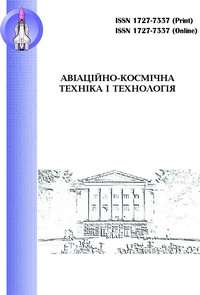Digital image representation by atomic functions: features for computer vision and machine learning

View/
Date
2025Author
Makarichev, V.
Lukin, V.
Kryvenko, S.
Brysina, I.
Metadata
Show full item recordAbstract
Digital images obtained from remote sensing (RS) systems have become essential in numerous technological applications across diverse domains, including environmental monitoring, agriculture, urban planning, and defense. These images are typically characterized by high spatial and spectral resolution, resulting in large data volumes. Compared to other data types, their substantial size presents challenges in terms of the efficient application of machine learning (ML) and computer vision (CV) methods. In particular, the processing of such largescale data can be computationally intensive and time-consuming, making it difficult to deploy conventional ML and CV techniques in scenarios requiring real-time responses or in systems with limited processing resources, such as autonomous platforms. One of the key issues in this context is the development of compact image representations that retain essential features for further analysis. These representations must reduce data dimensionality without losing critical information required for classification, clustering, and other ML/CV tasks. In this study, we explore the discrete atomic transform (DAT), which is based on atomic functions, as a potential solution to this problem. Previous research has demonstrated that DAT provides valuable benefits in terms of data compression and encryption, thereby enabling secure and efficient storage and transmission. The focus of this work is to assess whether DAT is suitable for ML and CV applications, particularly in the context of image clustering. We evaluated the performance of the well-known k-means clustering algorithm when applied to DAT images. The experimental results demonstrate that using DAT significantly reduces computation time, achieving multiple-fold acceleration, without compromising clustering quality. This suggests that DAT not only minimizes data size and preserves structural and statistical features relevant to learning-based tasks. These results indicate that the integration of DAT into preprocessing pipelines for RS imagery is a promising approach. The proposed method can enhance the efficiency of downstream ML and CV algorithms, especially in constrained environments where computational resources are limited. Overall, the discrete atomic transform is a practical and versatile method for improving the scalability and applicability of intelligent image analysis in remote sensing and related fields. Цифрові зображення, отримані за допомогою систем дистанційного зондування (ДЗ), стали важливими в численних технологічних застосуваннях у різних галузях, включаючи моніторинг навколишнього середовища, сільське господарство, міське планування та оборону. Порівняно з іншими типами даних, їхній значний розмір створює труднощі для ефективного застосування методів машинного навчання (МН) та комп'ютерного зору (КЗ). Зокрема, обробка таких великомасштабних даних може бути обчислювально ресурсоємною та трудомісткою, що ускладнює розгортання традиційних методів МН та КЗ у сценаріях, що вимагають реагування в режимі реального часу, або в системах з обмеженими ресурсами обробки, таких як автономні платформи. Одним з ключових питань у цьому контексті є розробка компактних представлень зображень, які зберігають важливі характеристики для подальшого аналізу. Ці представлення повинні зменшувати розмірність даних без втрати критичної інформації, необхідної для класифікації, кластеризації та інших завдань МН/КЗ. У цьому дослідженні ми досліджуємо дискретне атомарне перетворення (DAT), яке базується на атомарних функціях, як потенційне рішення цієї проблеми. Попередні дослідження показали, що DAT надає цінні переваги з точки зору стиснення та шифрування даних, забезпечуючи безпечне та ефективне зберігання та передачу. Метою цієї роботи є оцінка придатності DAT для застосувань машинного навчання (ML) та когерентної діагностики (CV), зокрема в контексті кластеризації зображень. Ми оцінюємо продуктивність відомого алгоритму кластеризації k-середніх при застосуванні до зображень, представлених за допомогою DAT. Експериментальні результати показують, що використання DAT значно скорочує час обчислення, досягаючи багатократного прискорення, без шкоди для якості кластеризації. Це свідчить про те, що DAT не тільки мінімізує розмір даних, але й зберігає структурні та статистичні особливості, важливі для завдань, заснованих на навчанні.
